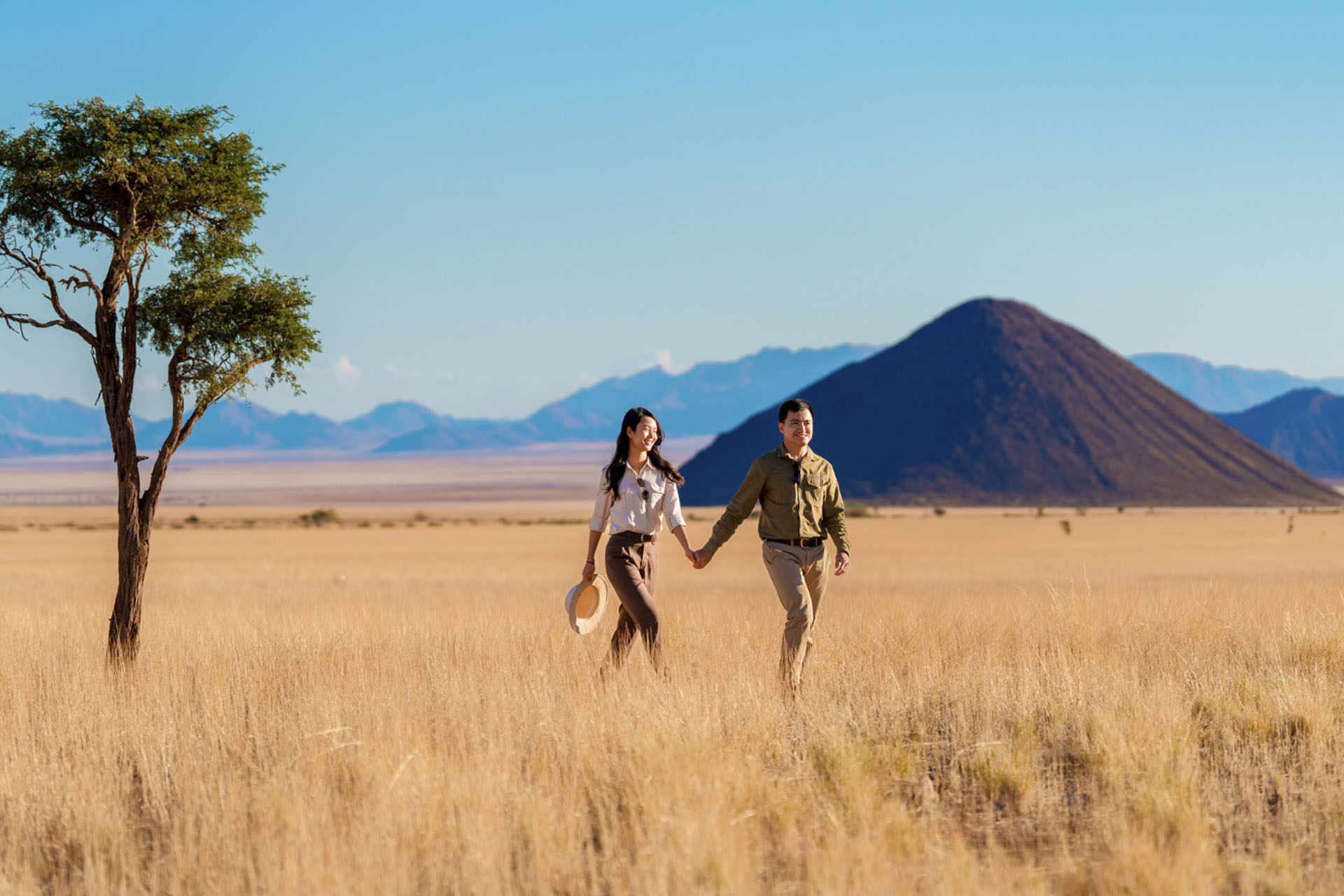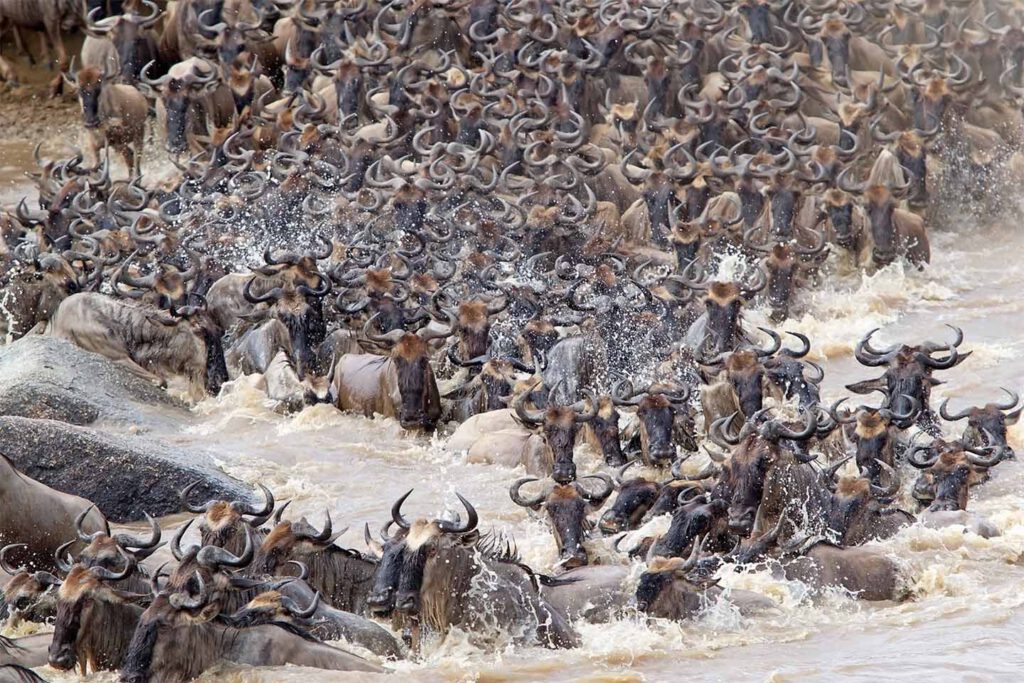

Witness the Great Wildebeest Migration in Serengeti, Tanzania – a natural spectacle of over 2 million wildebeest, zebras, and gazelles on their epic journey. Learn when and where to see river crossings, calving season, and plan your dream safari.
The Great Wildebeest Migration is one of the most extraordinary wildlife events on the planet. Every year, over 1.5 million wildebeest, accompanied by hundreds of thousands of zebras and gazelles, embark on a continuous, circular journey across the Serengeti-Mara ecosystem in search of fresh grazing and water.
This epic trek spans Tanzania’s Serengeti National Park and Kenya’s Maasai Mara, creating breathtaking scenes of mass movement, predator-prey encounters, and the dramatic Mara River crossings.
For wildlife lovers, photographers, and adventurers, witnessing the migration is a once-in-a-lifetime experience.
Nature’s Greatest Show on Earth
The Great Migration is an annual, cyclical movement of herbivores driven by seasonal rains and the availability of fresh grass. The main players are the blue wildebeest, but they are joined by zebras and Thomson’s gazelles, creating a vast, thundering sea of life.
Predators such as lions, leopards, cheetahs, hyenas, and Nile crocodiles follow closely, ensuring nature’s circle of life is always in motion.
The migration isn’t a single event but a continuous journey divided into key phases, each offering unique wildlife spectacles.
This is the birthing season, where thousands of wildebeest calves are born daily in the short-grass plains of Ndutu and the Southern Serengeti. With the abundance of vulnerable newborns, predator activity peaks as lions, cheetahs, and hyenas stalk their prey.
Highlights: Newborn calves, predator action, lush green landscapes
Best For: Photographers, Big Cat enthusiasts
As the rains soak the plains, the herds begin moving northwest towards the Western Corridor. The landscape turns vibrant, but game drives can be challenging due to muddy tracks.
Highlights: Scenic landscapes, dramatic skies
Best For: Travelers seeking fewer crowds
This marks the start of river-crossing season. Herds gather at the Grumeti River, where crocodiles lie in wait. The crossings here are smaller compared to Mara but still thrilling.
Highlights: Grumeti River crossings, large wildebeest gatherings
Best For: Adventure seekers, intimate river crossing scenes
The dramatic highlight of the migration. Wildebeest must cross the crocodile-infested Mara River. The tension, chaos, and sheer survival spectacle make this a must-see.
Highlights: Mara River crossings, predator-prey encounters
Best For: Wildlife enthusiasts, photographers, once-in-a-lifetime safari
With the arrival of the short rains, the herds begin their journey back south to the Serengeti plains, completing the endless circle of life.
Highlights: Moving columns of wildebeest, scenic green plains
Best For: Scenic safaris, less-crowded game drives
Serengeti National Park – The heart of the migration, offering year-round opportunities depending on timing and location.
Ndutu Plains – Prime for calving season (Jan–Mar).
Western Corridor & Grumeti – Ideal for early river crossings (Jun–Jul).
Northern Serengeti (Kogatende, Lamai) – Best place for witnessing Mara River crossings (Jul–Oct).
Mara River Crossing Game Drives
Hot Air Balloon Safari over the Wildebeest Herds
Walking Safaris in Ndutu
Photographic Safaris with Expert Guides
Calving Season: January – March
Grumeti Crossings: June – July
Mara River Crossings: July – October
Tanzania offers migration sightings almost year-round — timing your visit based on what spectacle you wish to witness is key.
Ready to explore Tanzania’s wildlife, culture, and landscapes? Let Tobiko Adventure craft your perfect journey. Book now and let the adventure begin!